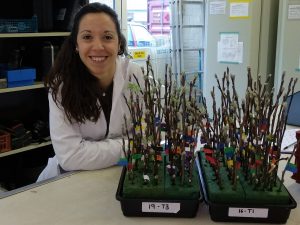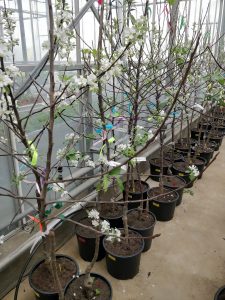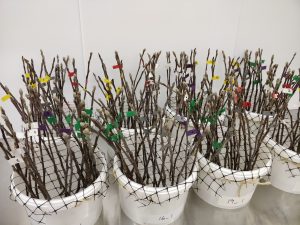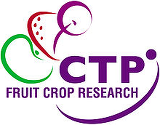November 2017 – October 2021
Carlota Gonzalez-Noguer

Climate change is predicted to impact adversely on UK apple production, with warmer winters and an increased risk of late frost events of particular concern. Warmer temperatures will affect the dormancy cycle, which determines the timing and quality of bud break. Insufficient chilling can reduce and/or delay bud break, cause non-uniform flowering and, as a consequence, the production of smaller and abnormal fruits. At the same time, warmer spring temperatures can advance blooming dates, thereby increasing the risk of yield losses due to late frost.

The dormancy cycle in apple trees is regulated by temperature, making the apple industry especially vulnerable to any changes in the climate. As chilling requirements vary between cultivars, it is important to anticipate how different varieties are likely to respond to climate changes so that informed commercial planting decisions can be made over the next few decades. This project aims to investigate this variability with the final goal of developing an improved model for bud break prediction, which will be a useful tool to help to inform cultivar selection.
This project aims to obtain a better understanding of the physiological mechanism controlling dormancy and chilling requirement. It will combine a modelling and an experimental approach in order to develop new strategies for climate change mitigation in apple orchards and evaluate such strategies in controlled environment studies. This work contributes to increasing the sustainability of the UK apple production, by acquiring crucial knowledge to forecast the effects of climate change on yield and quality.

Experiments are designed to answer the following questions:
- What do chilling and forcing models predict for the flowering of a range of apple tree varieties in the future UK climate (2020-2050)?
- Are the outputs of these models verified by experimental and historic data?
- Are there physiological markers which explain varietal variability in response to lack of chilling?
- Which varieties are best adapted to future growing conditions?
- Can new mitigations strategies be developed from an improved physiological understanding of dormancy, endodormancy release, and flowering?
